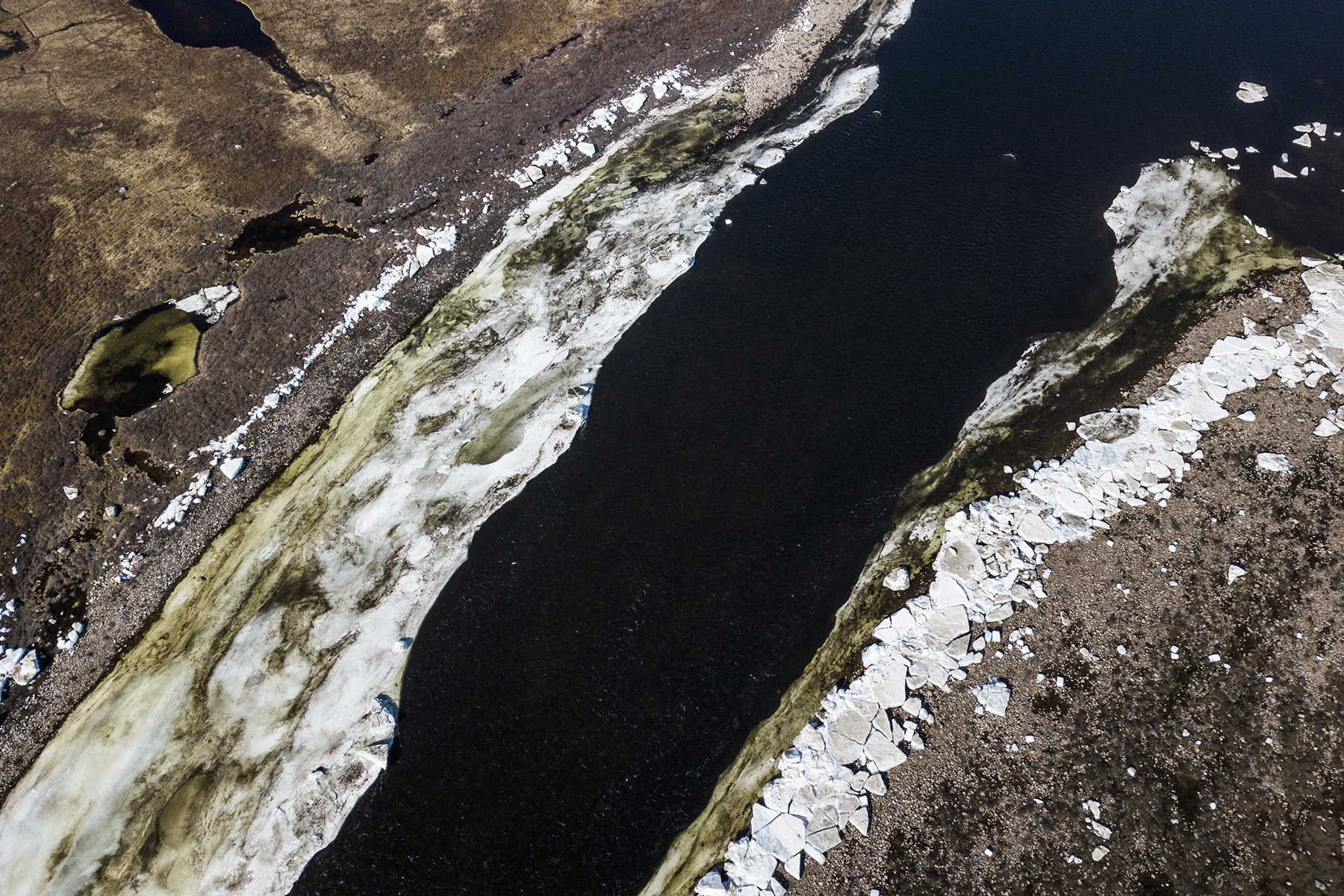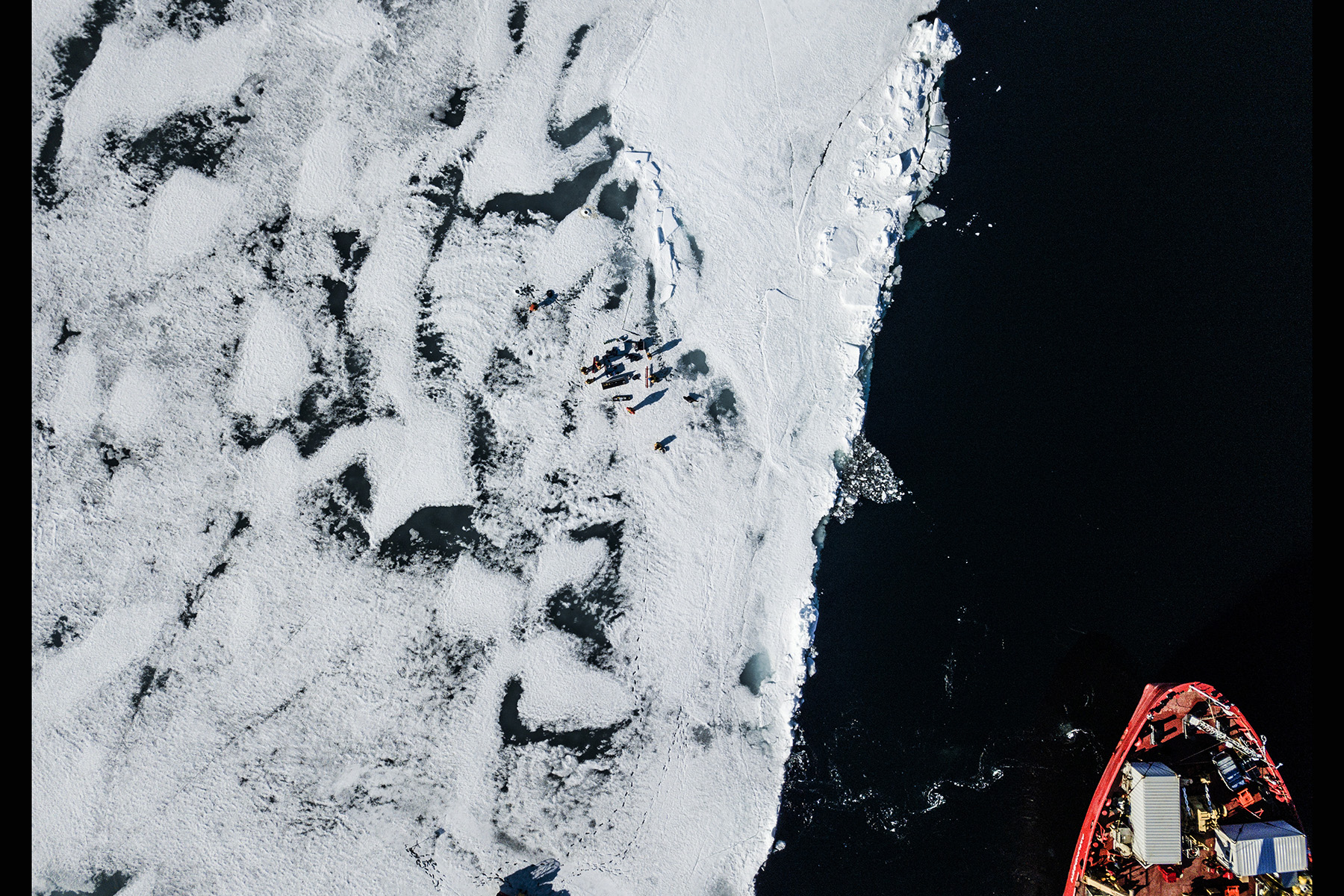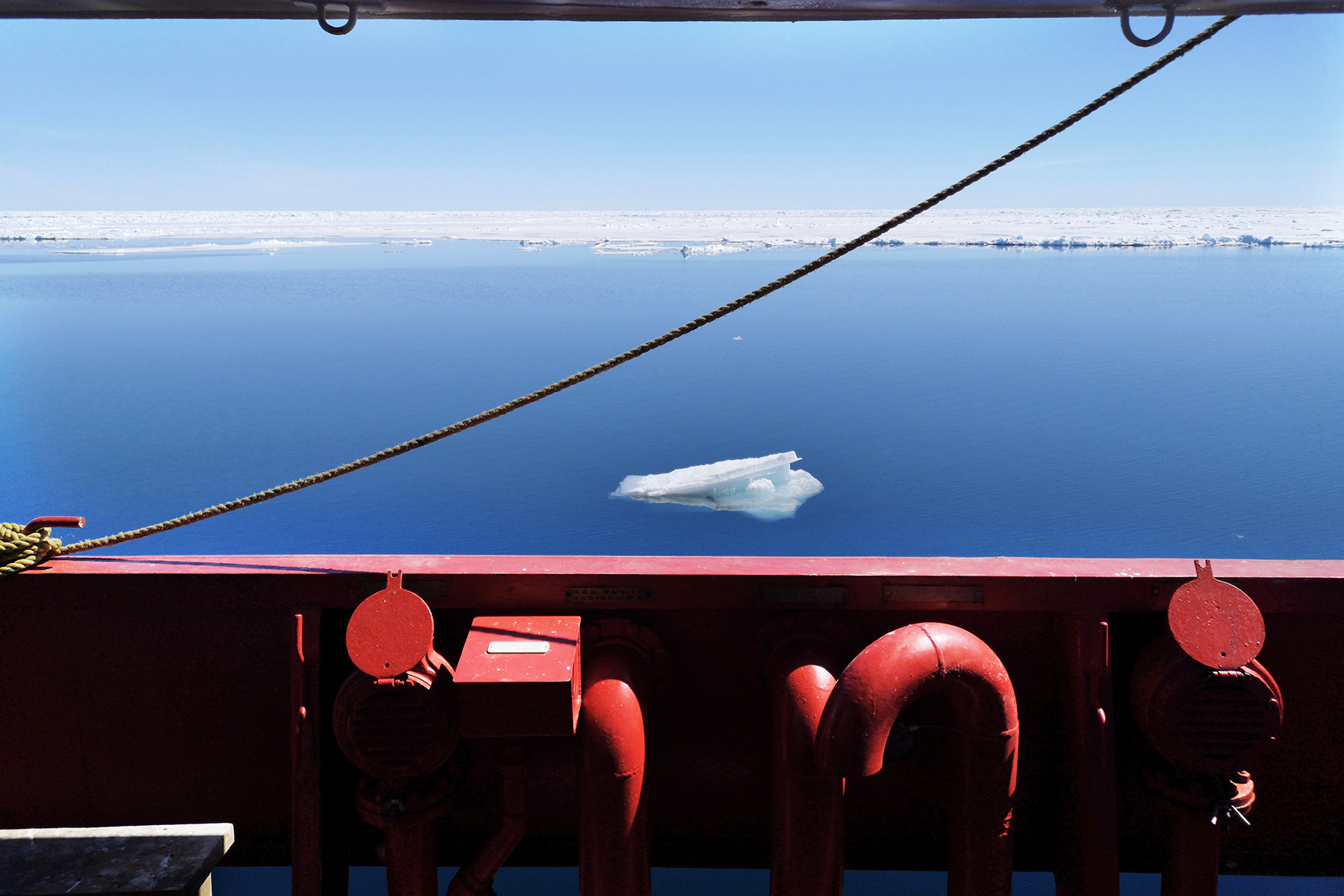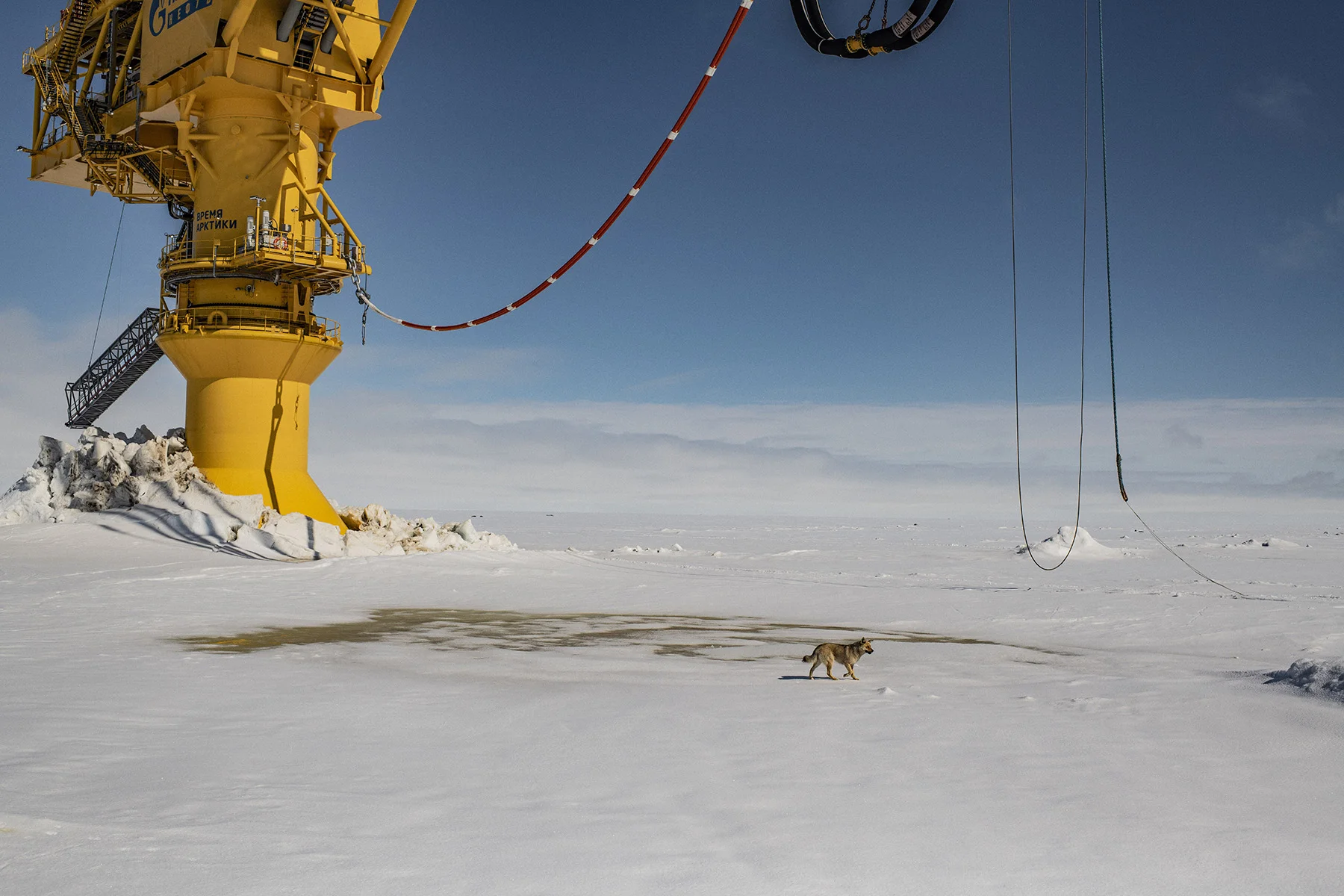Arctic: New Frontier
by Kadir van Lohuizen and Yuri KozyreV For Fondation Carmignac
Chapters
Dedicated to the Arctic and chaired by climatologist Jean Jouzel, winner of the 2012 Vetlesen Award and co-winner of the 2007 Nobel Peace Award as Director of the IPCC, and under the patronage of Minister Ségolène Royal, French Ambassador for the Arctic and Antarctic Poles, the 9th edition of the Carmignac Photojournalism Award was awarded to Yuri Kozyrev and Kadir van Lohuizen.
Their double polar expedition project, “Arctic: New Frontier”, focuses on the consequences of the melting of the sea ice for the planet, and the medium-term prospect of its total disappearance.
Yuri Kozyrev travelled towards the East and Kadir van Lohuizen headed West. Each of them travelled halfway across the Arctic Circle to meet in September in the Berin Strait.
From Russia to Norway, Greenland, Canada and Alaska, the two laureates, in their respective areas of research, explored key issues affecting the Arctic - the opening of new trade routes, the militarisation of borders, the search for mineral resources, polar tourism, etc. - and their impact on our daily lives.
“The melting of the polar sea ice is in the process of changing the map of the world for ever. In visiting all the affected regions and countries in one expedition and by showing how the different players – starting with Russia and the U.S. – are working on conquering the North Pole, we are revealing how the impact of climate change in the Arctic is of global significance for the rest of the world.”
Alaska
These images were taken in Point Hope, Alaska. The Inuit community of Point Hope is allowed to catch 10 bowheads per year. Native communities are allowed to hunt whales for their own use. The quotum is given by the International Whaling commission.
Nowadays due to the early disappearance of the sea ice its much harder for the community to catch whales and it threatens their livelihood. Normally the hunting starts when the sea ice starts to break in the spring. When the whales migrate up North, they use the channels to come up for breathing. If there is no ice, they spread out over a much wider area and are more difficult to track.
Greenland
Meltrivers (below) close to the edge of the ice sheet close to Kangerlussuaq, Greenland. The ice sheet is melting at a rapid speed, along with the glaciers. A melting stream such as this one is becoming more common, just like the reservoirs and underground rivers which are gradually forming.
Canada
This image (below) was taken in Chesterfield, Canada. The Canadian Arctic is immense and remote. There are no deep sea ports, hardly any roads and Canada has too few icebreakers operating. Flights are incredibly expensive due to monopolies and few passengers.
The search for mineral and fossil resources is at an all time high. Diamonds, gold, zinc, tin, copper, oil, gas, all seems to be ready to be mined. The melting of the (sea) ice and permafrost makes it easier than before, although it can still be challenging.
The Canadian Arctic Rangers (below) are an Inuit division in the Canadian army and train the soldiers to operate and survive in harsh conditions. All Arctic nations are gradually increasing their military presence in the region. ⠀
This image depicts their attempt to start up the snow scooters at -40 degrees Celsius, as fuel pumps often freeze. As this is one of Canada's most Northern islands, the Canadian army trains here to survive and sustain themselves in the high Arctic.
Russia
The Nenets, people of the Siberian Arctic, are the guardians of a style of reindeer herding that is the last of its kind. Through a yearly migration of over a thousand kilometres, these people move gigantic herds of reindeer from summer pastures in the north to winter pastures just south of the Arctic circle.
No one knows for certain whether it is the reindeer that lead the people or vice versa. What is certain is that fewer places on earth are home to a more challenging environment, an environment where temperatures plummet to -50C and where crossing the worlds fifth largest river as it deep-freezes is just part of the routine.
The people are united physically through their regimented work ethic, but more importantly, through their robust and vibrant culture. It is a culture that has survived turbulent periods, from early Russian colonisation, to Stalin’s terror regime, to the contemporary dangers of a rapacious oil and gas development programme.
Norilsk is now home to a nickel factory, a copper factory, and the metallurgical complex. Over half of the population in Norilsk works in one of these three plants.
Nakhimov School in Murmansk is a Russian government initiative to patriotic education for the new generation of Russians.
Under the decision of the Russian President Vladimir Putin, nine presidential Cadet and Nakhimov schools have been established in the country in the last five years. In total, there are 29 pre-higher education schools in the Russian Federation.
Norway
The Norwegian coastguard, which is part of the navy, is patrolling the Isfjorden. The coastguard is not allowed to be based on Svalbard, but operates from Norway, because administratively, the archipelago is not part of Norway, but forms an unincorporated area administered by a governor appointed by the Norwegian government.
Although Svalbard is under Norwegian sovereignty, the unique Svalbard Treaty of 1920 allows citizens of signatory countries equal rights to exploit natural resources. Russia, along with Norway maintains mining operations on Svalbard as a result.
















